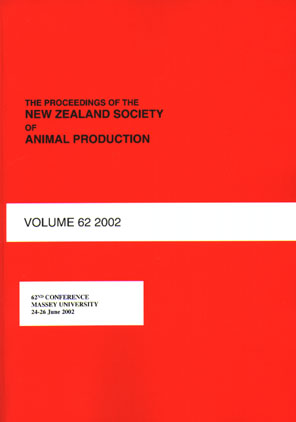Abstract
In earlier work, we showed that two cohorts of carry-over cows produced 10% more milksolids (MS) in the first lactation (2008/09) subsequent to the carry-over (non-lactating) season. Here we present further production data for this cohort through to the fourth post-carry-over lactation, together with production data for two further cohorts through to their second and third post-carry-over lactations respectively, and compare this to production from non-carry-over (annual calving) cows of similar breed and breeding worth (BW) in the same herd. Carry-over cow cohorts produced more MSthrough to and including the third post-carry-over lactation relative to non-carry-over cows. We term this additional production the ‘holiday effect’. First year MS holiday effects were 57 kg (13%) and 106 kg (23%); second year holiday effects were 36 kg (8%), 48 kg (10%) and 31 kg (6%); and third year effects were 48 kg (10%) and 41 kg (8%). Aggregate survivability through to the fourth post-carry-over lactations of 83%, 82% and 71% respectively were broadly consistent with national survivability statistics. It is concluded that the bio-economics of carry-over cows are worthy of consideration, particularly for young cows of high BW and PW status which have previously given birth at least once.
Proceedings of the New Zealand Society of Animal Production, Volume 73, Hamilton, 96-99, 2013
| Download Full PDF | BibTEX Citation | Endnote Citation | Search the Proceedings |

This work is licensed under a Creative Commons Attribution-NonCommercial-NoDerivatives 4.0 International License.

